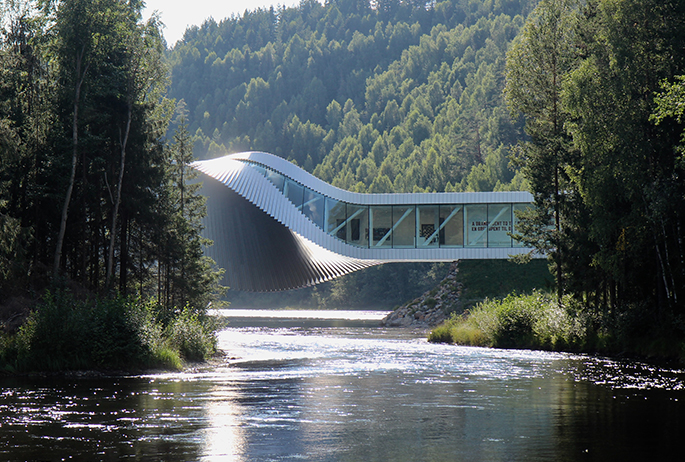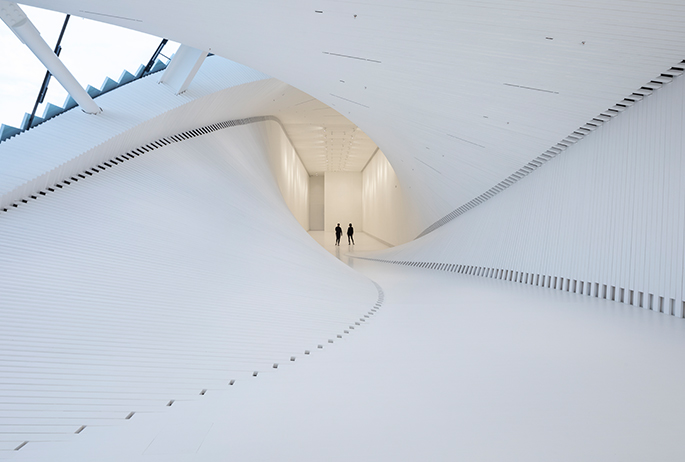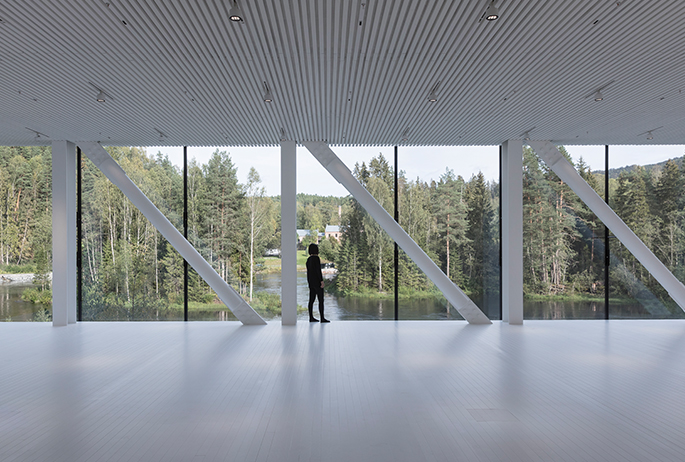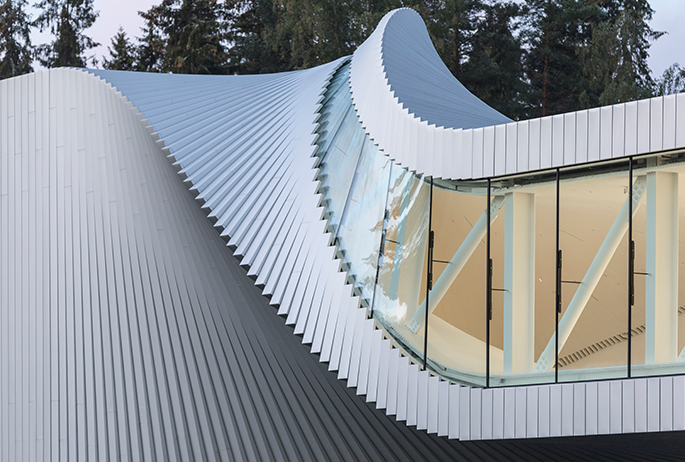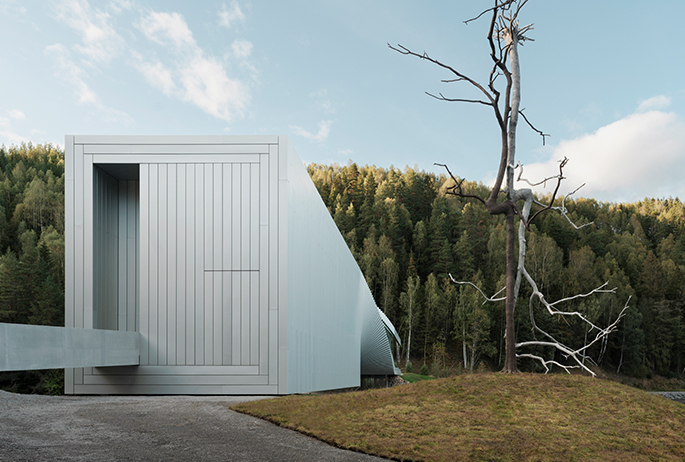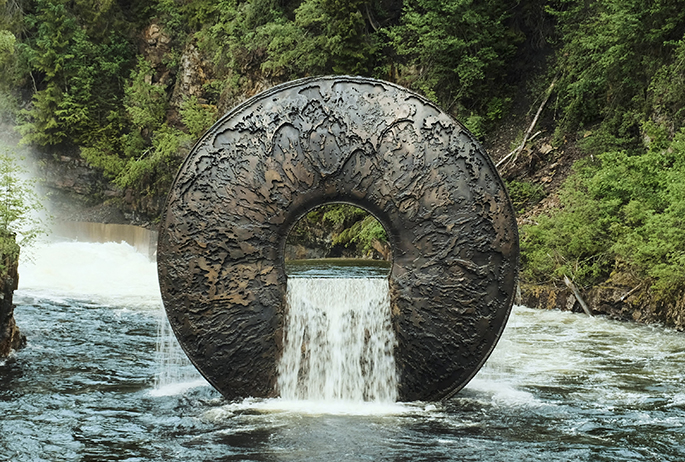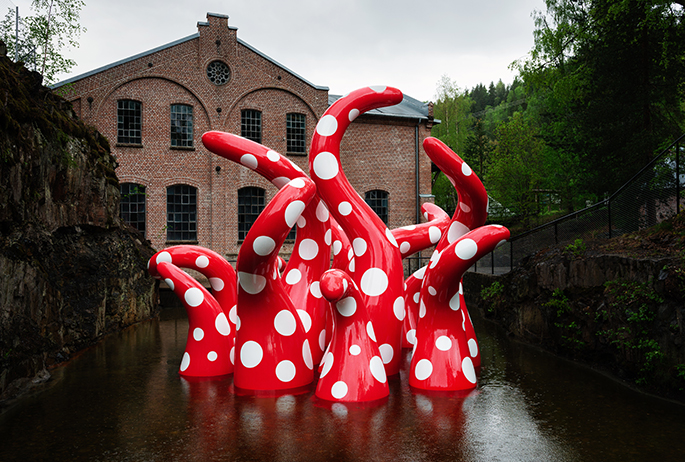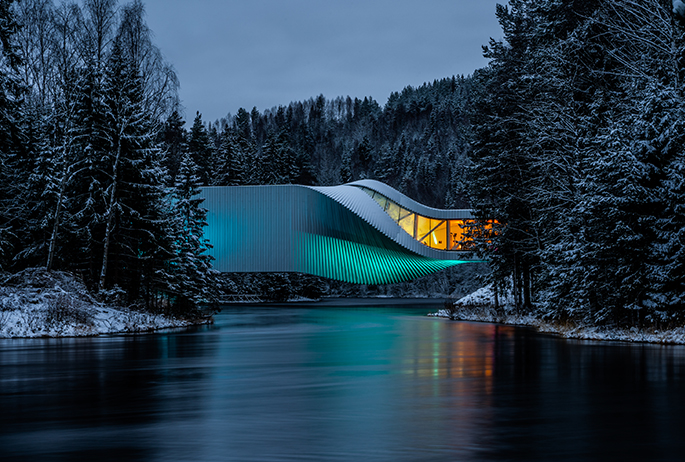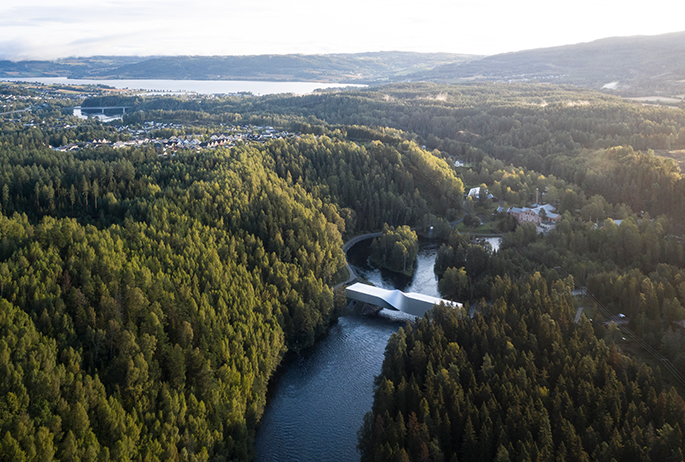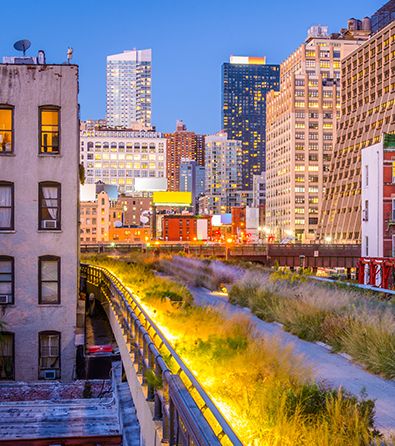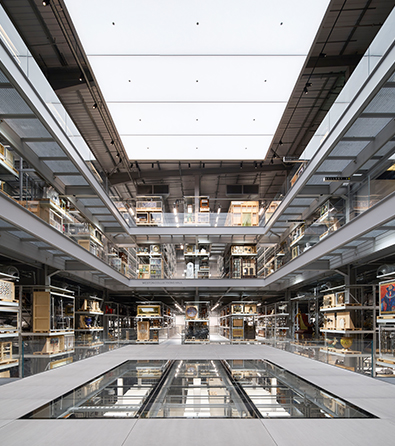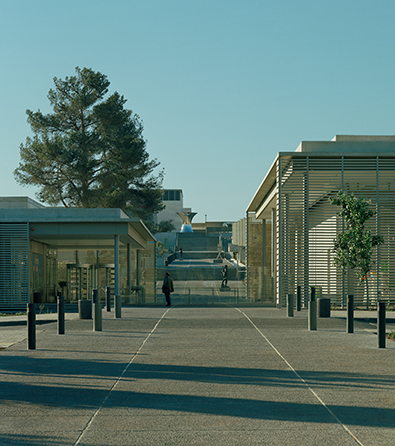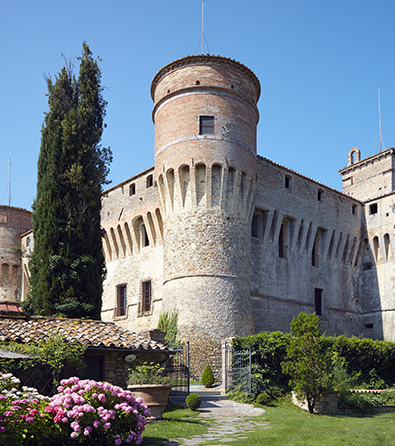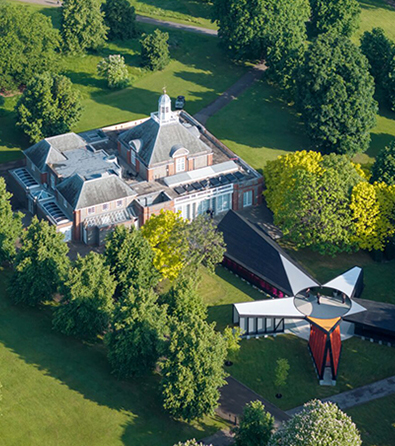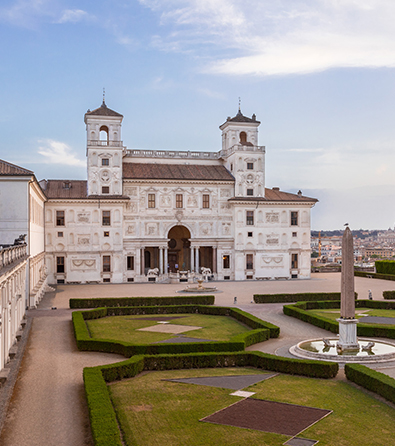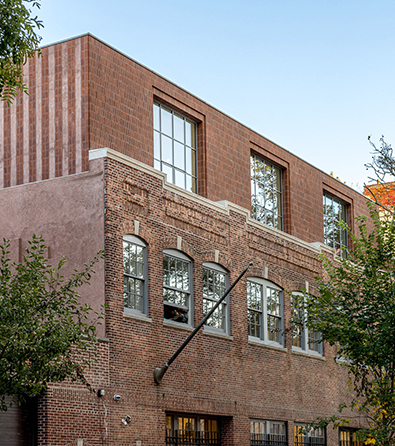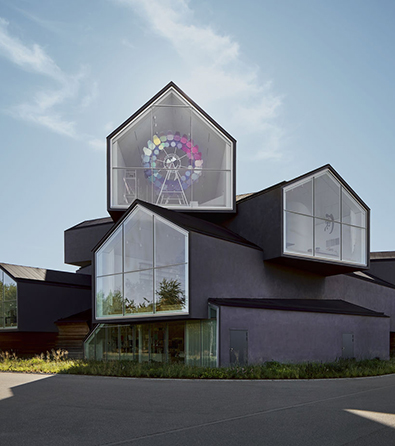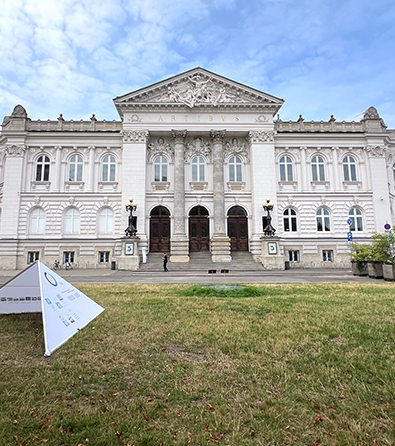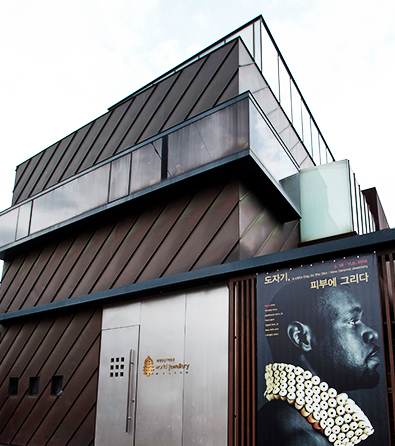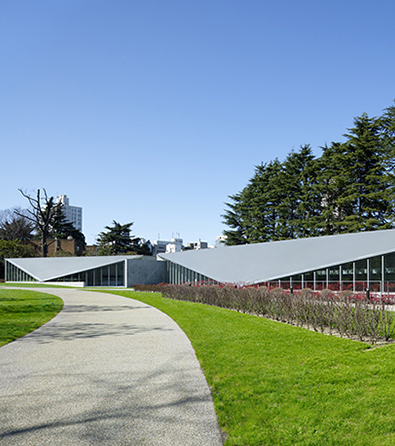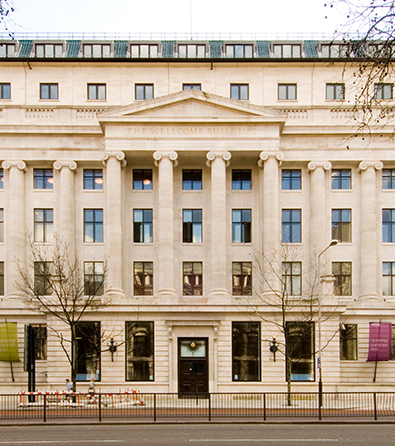Kistefos is one of Norway’s most distinctive destinations for contemporary art, architecture, and industrial heritage, situated along the Randselva River, approximately an hour north of Oslo. The site includes several key elements: the preserved nineteenth-century wood pulp mill, founded in 1889 by industrialist Anders Sveaas; an expansive sculpture park featuring more than fifty site-specific artworks by leading international artists; the Nybruket Gallery, housed in a former mill building from 1896; and two historic hydroelectric power stations. At the heart of the complex stands The Twist, a striking gallery-bridge designed by the Danish architecture firm Bjarke Ingels Group (BIG), which opened to the public in 2019. Spanning sixty meters across the river and rotating ninety degrees along its axis, the structure functions simultaneously as an art gallery, a pedestrian crossing, and a sculptural landmark.
Kistefos is situated on the grounds of the former Kistefos Træsliberi pulp mill, which began operations in 1890 and remained active until 1955. In the 1990s, Christen Sveaas, grandson of the mill’s founder, reacquired the site and initiated its transformation into a cultural destination that would preserve the industrial legacy while serving as a platform for contemporary art. The Kistefos Museum officially opened in 1996 and has since evolved into a major art park, featuring works by artists such as Yayoi Kusama, Anish Kapoor, Olafur Eliasson, Tony Cragg, Jeppe Hein, Marc Quinn, and Fernando Botero. The sculpture park is a thoughtful integration of art and landscape, encouraging reflection, movement, and engagement across the wooded terrain.
In 2014, Kistefos launched an international architectural competition for the design of a new gallery that would physically connect the two sides of the park, which were divided by the Randselva River. The winning proposal, submitted by Bjarke Ingels Group (BIG) under the direction of Bjarke Ingels, Brian Yang, and David Zahle, envisioned a building that would function both as a space for art and as a striking sculptural element within the natural setting. The result is The Twist, a 1,000-square-meter structure that spans sixty meters and rotates along its length to resolve the elevation difference between the southern bank and the higher northern terrain. The building guides visitors through a sequence of three spatial zones, each distinct in scale, lighting, and orientation, offering varied visual relationships to the art and surrounding environment.
The southern end of The Twist houses a tall, enclosed gallery designed for smaller works and light-sensitive media. As visitors move through the central portion of the building, the area where the twist physically occurs, they pass through a transitional space with natural light from a slender linear skylight. This middle zone draws attention to the dramatic geometry of the structure. At the northern end, the space opens into a wide, panoramic gallery where floor-to-ceiling glass offers sweeping views of the river, the surrounding forest, and the original industrial complex. Beyond serving as an exhibition space, The Twist also functions as a pedestrian bridge that completes the circular walking route through the Kistefos Sculpture Park, enabling an immersive experience of the site.
Art exhibitions at The Twist are curated by Chief Curator Kate Smith. Under her direction, the gallery presents an annual main exhibition featuring international contemporary artists. In addition to its exhibition program, Kistefos offers a seasonal schedule of events, including artist talks, performances, guided tours, and private evening visits.
